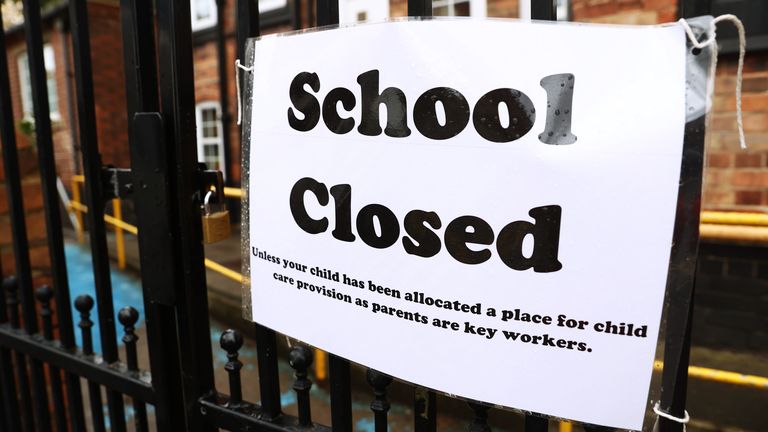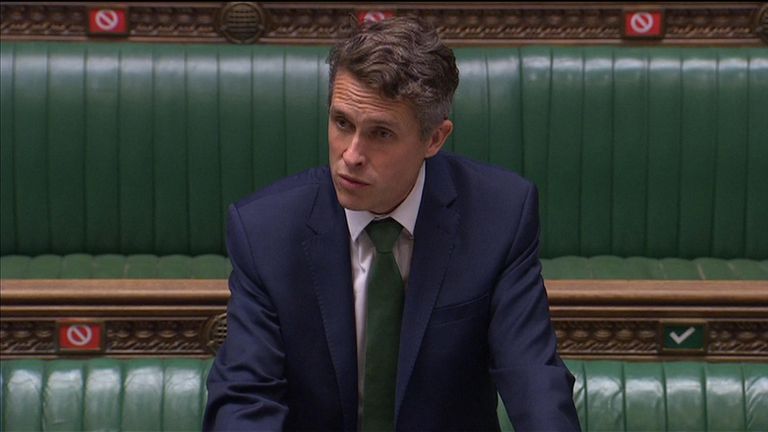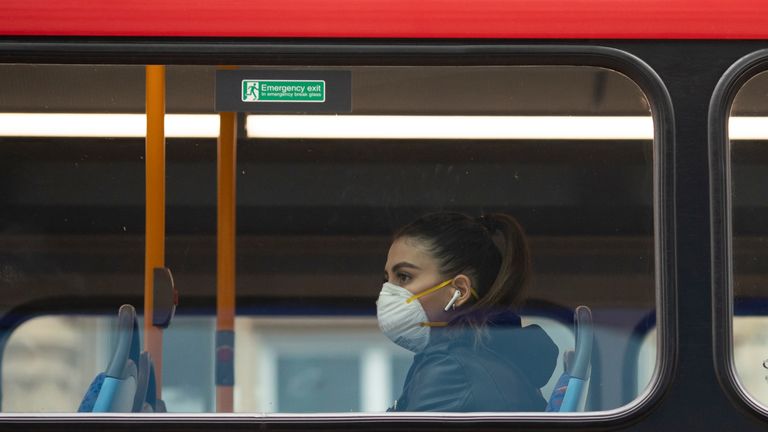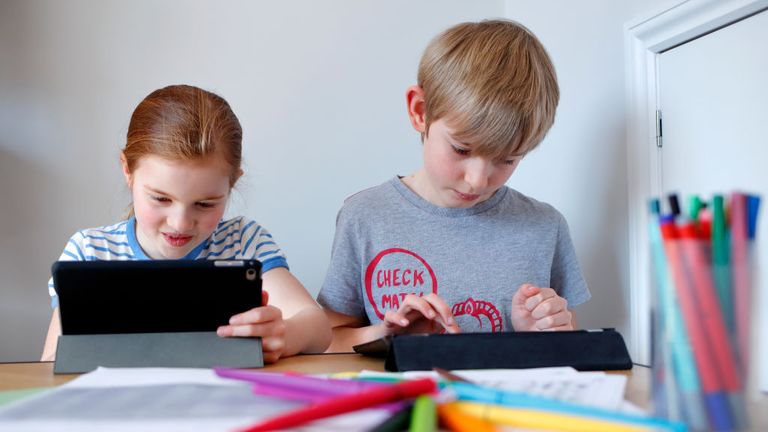All children will be told to go back to school from September, as the government said restarting learning was "critical to our national recovery".
Education Secretary Gavin Williamson announced mandatory attendance will be introduced when the new academic year starts to ensure pupils don't fall any further behind.
He said kids will be learning again "full-time" after schools were told to close their doors to anyone but children of key workers at the outset of the coronavirus lockdown.
Mr Williamson told MPs he wanted to make sure "all children who can be at school are at school".
He promised there will be no "dumbing down" of the curriculum and everyone will be taught a "full, broad and balanced" range of subjects - including arts and sports.
More details will be set out at a Downing Street news conference later on Thursday - the first one since the daily briefings were scrapped.
What will happen if there is a COVID-19 outbreak?
"Small groups" of pupils and staff may have to self-isolate for up to 14 days if there is a positive case of coronavirus in a school or college.
But if two or more cases are found within 14 days, larger groups of young people will have to self-isolate as a "precautionary measure".
Closing schools, new guidance from the Department for Education says, "will not generally be necessary".
Will there be enough tests?
A small number of home testing kits will be sent to all schools and colleges by the start of next term, Mr Williamson vowed.
These will be given to pupils who would struggle to those who would struggle to go to a testing centre.
In cases where an outbreak is feared, a mobile testing unit could be dispatched to test others who have been in contact with the person who has the virus.
Will children have to social distance?
Limits on class sizes will be scrapped, and bubbles can encompass a whole class or a whole year group of potentially over 200 students.
There will not be a requirement for one metre or two metre distancing between children, but schools should "continue minimising contact between children" - particularly older pupils where they can, Mr Williamson said.
Teachers are strongly advised to keep a two metre distance from other adults and older pupils.
Who will have to wear a mask?
Children and staff will not be required to wear face coverings when in school, but those over the age of 11 will be required to do so if travelling in on public transport.
Will teaching be any different?
The curriculum pupils are taught will be "full, broad and balanced", Mr Williamson promised.
"And that includes the arts and humanities. It includes sports.
"It includes so much because we recognise that to give children the best opportunities to succeed in life they have to have that breadth of curriculum and we should not be seen to be dumbing down or reducing it."
Exams will go ahead in summer 2021, he added.
But Ofqual - the exams regulator - wants the start of GCSE exams to be delayed until after next summer's half-term break.
The watchdog has launched a consultation on how to alter the timetable to allow more time for teaching.
What will happen to children who need to self-isolate?
Schools will be expected to have plans in place for pupils who are self-isolating, including offering remote learning.
What about school inspections?
Ofsted inspections are hoped to restart from January next year, Mr Williamson said.
What do teachers and unions say about the plan?
Geoff Barton, general secretary of the Association of School and College Leaders (ASCL), said: "The logistics of keeping apart many different 'bubbles' of children in a full school, including whole year groups comprising hundreds of pupils, is mind-boggling.
"School leaders will have to consider implementing staggered starts, finishes and lunchtimes, alongside transport to and from school, on an epic scale."
Paul Whiteman, general secretary of school leaders' union NAHT, added: "The situation seen in Leicester this week has demonstrated that this crisis is far from over, and there will be further disruption ahead.
"It is therefore essential that Government continues to monitor the data when it comes to school return and that it also has a credible Plan B in place should it be required."
How many pupils are already back at school?
Currently 1.6 million students in England are back in the classroom, after a phased reopening began last month. England's 9 million children are all expected to return in September.
https://news.google.com/__i/rss/rd/articles/CBMie2h0dHBzOi8vbmV3cy5za3kuY29tL3N0b3J5L2Nvcm9uYXZpcnVzLWFsbC1wdXBpbHMtbXVzdC1yZXR1cm4tdG8tc2Nob29sLWluLXNlcHRlbWJlci1lZHVjYXRpb24tc2VjcmV0YXJ5LXRlbGxzLW1wcy0xMjAxOTU4NdIBf2h0dHBzOi8vbmV3cy5za3kuY29tL3N0b3J5L2FtcC9jb3JvbmF2aXJ1cy1hbGwtcHVwaWxzLW11c3QtcmV0dXJuLXRvLXNjaG9vbC1pbi1zZXB0ZW1iZXItZWR1Y2F0aW9uLXNlY3JldGFyeS10ZWxscy1tcHMtMTIwMTk1ODU?oc=5
2020-07-02 12:33:45Z
52780891504390





Tidak ada komentar:
Posting Komentar